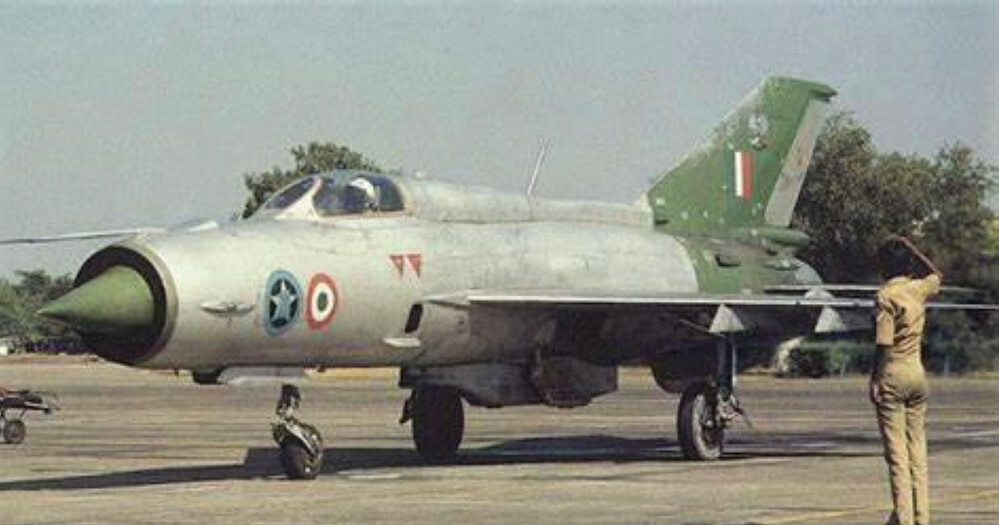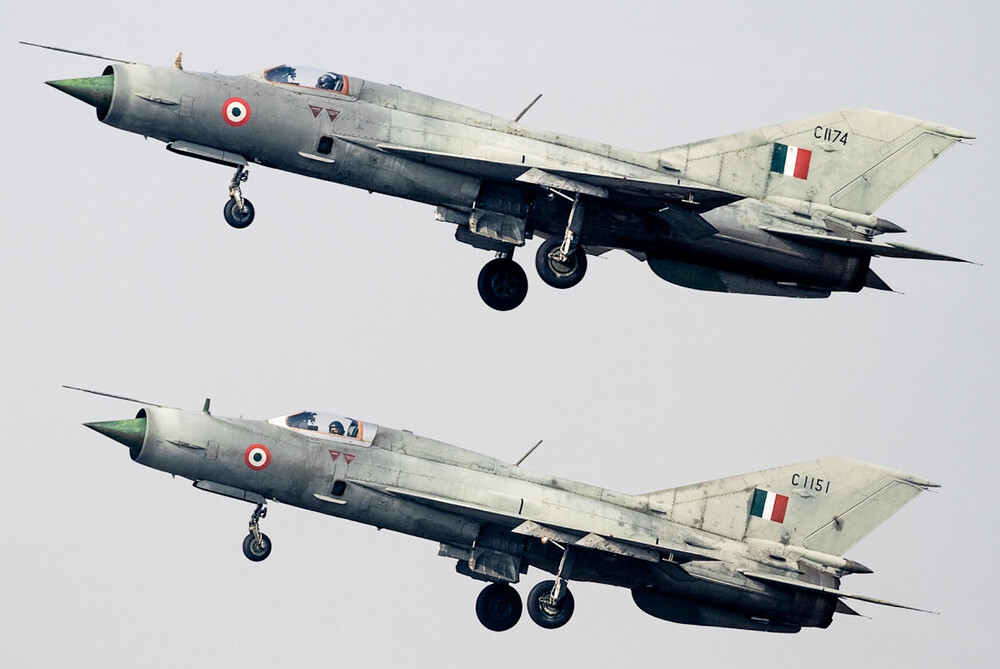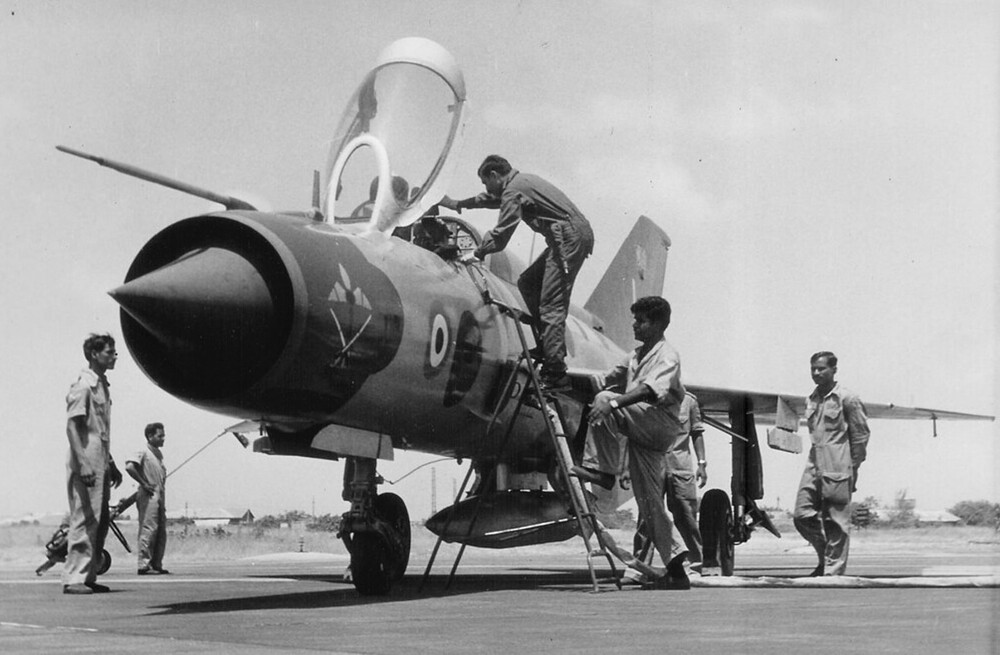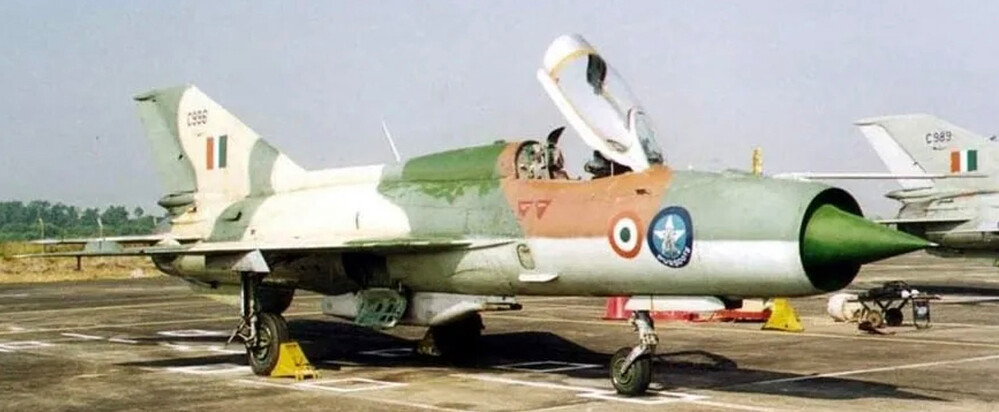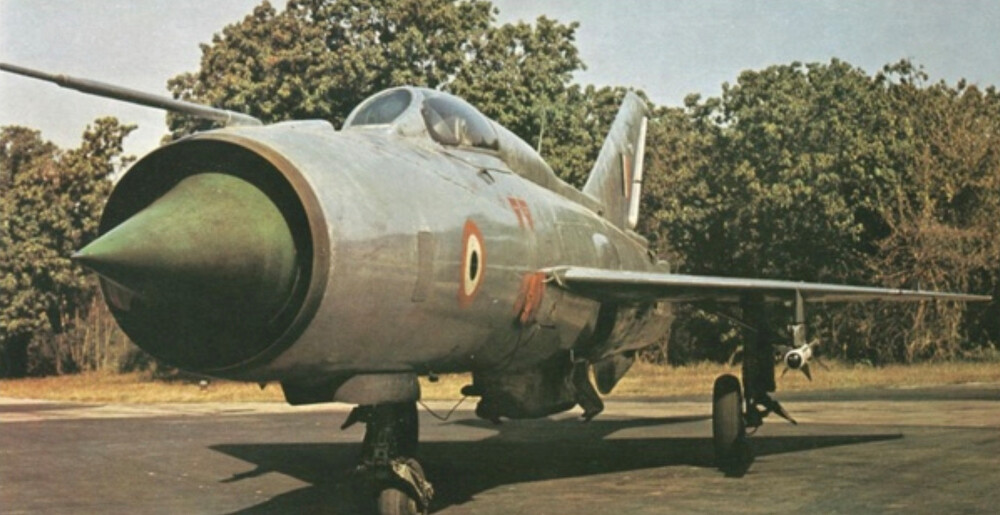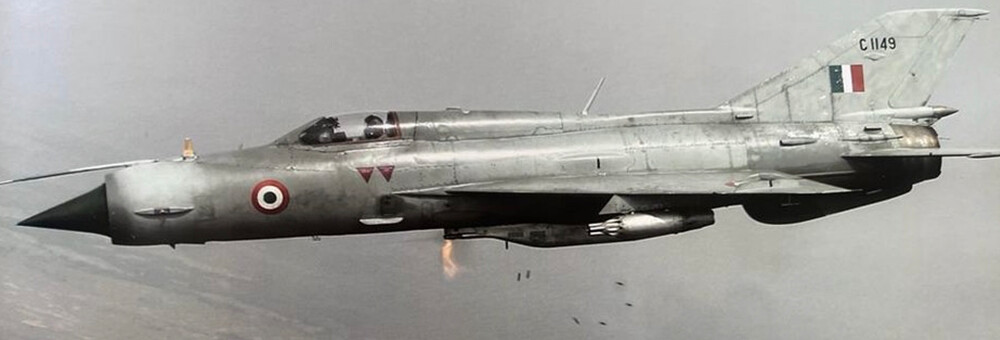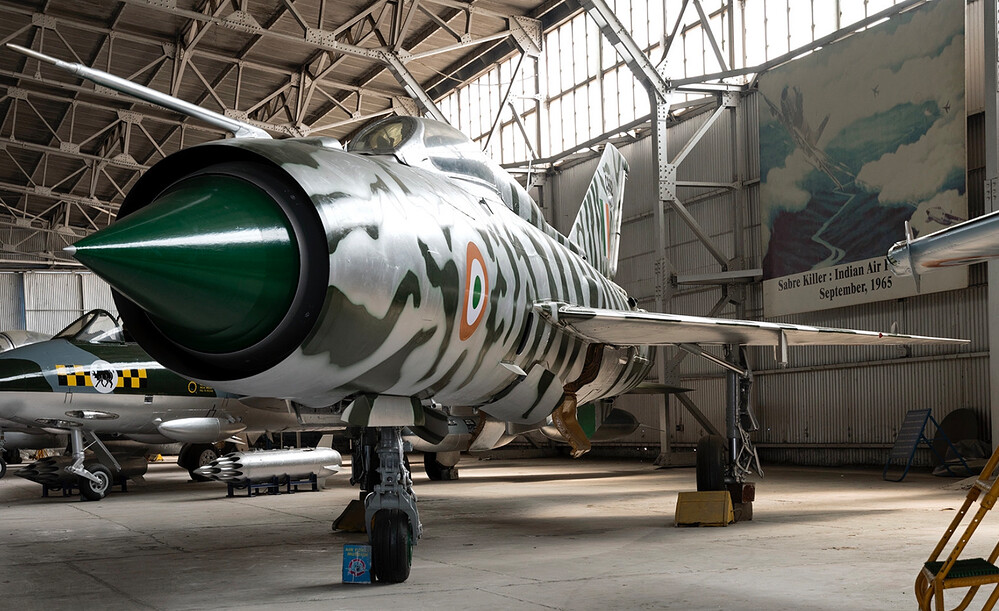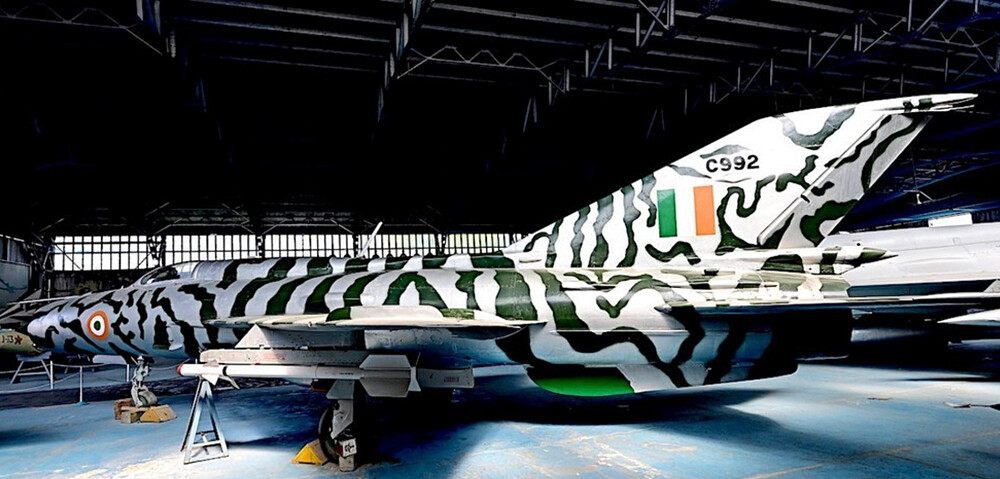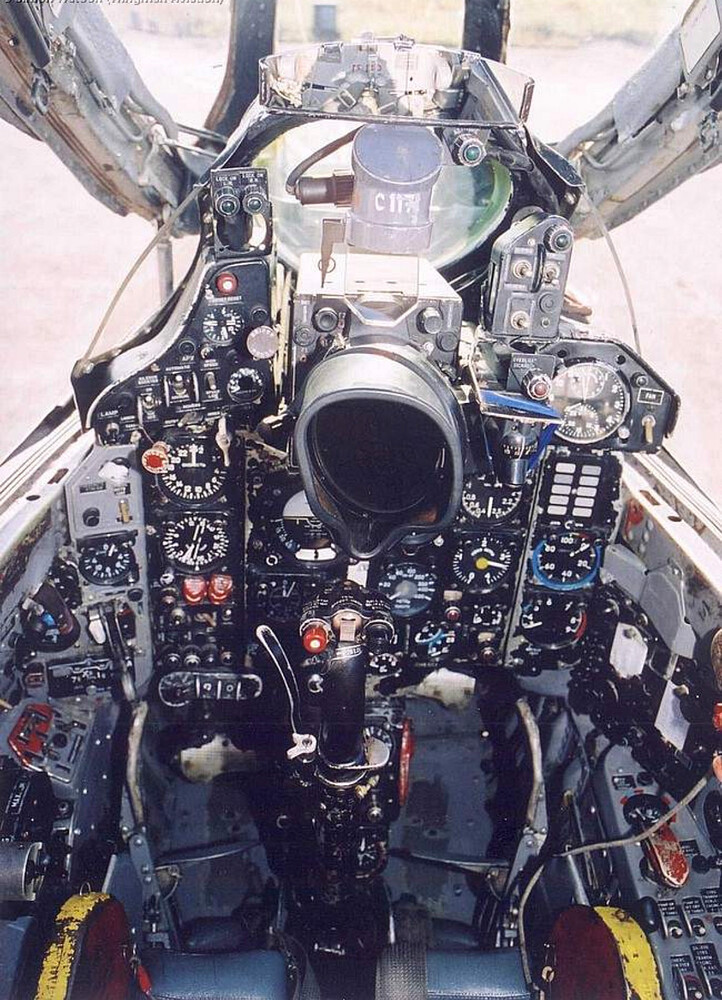[Would you like to see MiG-21FL in-game?]
- Yes
- No
0
voters
MiG-21FL Fishbed-F (Type 77)
The MiG-21FL marked India’s entry into the era of modern, radar-equipped supersonic jet fighters. Derived from the Soviet-designed all-weather interceptor, the FL served as the export variant of the MiG-21PF.
The MiG-21PF succeeded the MiG-21F-13 and marked a significant shift by introducing an onboard radar. However, this upgrade removed the internal cannon, a decision that quickly proved problematic, as real-world air combat continued to demonstrate the critical need for guns in close-range engagements. The original MiG-21FL shared these same issues and came without an internal cannon and was also equipped with only two missile pylons. However, the Indian Air Force, recognizing the limitations of this configuration, soon modified the aircraft to carry an external GP-9 cannon pod and added two additional underwing pylons, greatly enhancing its combat effectiveness. In short, the Indian MiG-21FL stands as an improved and more ‘War Thunder-worthy’ version of the MiG-21PF.
Origins and Evolution
Spoiler
India initially acquired the MiG-21PF in limited numbers, but it quickly became apparent that the aircraft needed better combat versatility. This led to the acquisition of the MiG-21FL, a Soviet variant of the mid-production PFS (Improved PF) tailored specifically for export. While based on the PF, the FL introduced aerodynamic and structural changes found on the interim MiG-21PFS variants, such as the enlarged vertical tail fin with the braking parachute repositioned to its base, and the incorporation of the SPS blown-flap system to enhance low-speed handling. However, it uses an older R-11F-300 engine and a simplified R-2L radar set (Export RP-21). Unlike the Soviet PF, the FL could not guide beam-riding missiles like the RS-2US. Instead, it relied on infrared-guided R-3S missiles for air combat. Thankfully, HAL-produced MiG-21FLs were eventually equipped with GP-9 gun pods and fitted with additional missile pylons to enhance their combat capability. However, even the Indian FLs retained the simpler forward-opening canopy and older ejection seat of the MiG-21PF, unlike the more advanced MiG-21PFM, which had a side-hinged canopy and a modern KM-1 ejection seat. This visual progression made the FL variant a visual hybrid, blending elements from both the PF and PFM lines.
Indian Production and Modifications
Spoiler
India became the first country outside the USSR to license-produce the MiG-21. Hindustan Aeronautics Limited (HAL) began assembling MiG-21FLs from Soviet kits before transitioning to full indigenous production by the early 1970s. Over 200 FLs were built locally, establishing India’s first high-volume production of a supersonic fighter. HAL’s FLs remained largely faithful to the Soviet design but gradually incorporated local improvements. One major upgrade was the addition of two more underwing pylons on later variants, bringing the total to four, which allowed later FLs to carry a larger missile and ground-attack loadout. This modification significantly improved the aircraft’s multirole potential. Additionally, Indian FLs were wired to carry the GP-9 gun pod, giving them a vital edge in air combat. Other upgrades included locally built avionics and improved radios. Though the radar remained the export R-2L, a relatively basic radar by modern standards.
It is imperative to note that while the MiG-21FL was exported to several other nations, none of them modified this specific variant as extensively as India did. Most operators used the FL in its basic Soviet form; with only two missiles and no gun pod. Even in Indian service, the gun pod and two additional pylons are not always present. As a result, when referring to this jet, it is important to clarify that it is the Indian MiG-21FL or Type 77 specifically, and not just any standard FL variant.
Combat History
Spoiler
The MiG-21FL saw its most significant combat action during the 1971 Indo-Pakistan War. By then, the FL was the IAF’s most capable interceptor and played a dominant role in both the western and eastern theatres. In the air, it proved itself against formidable opponents like the F-104 Starfighter. Indian pilots using the FL claimed multiple kills against PAF aircraft, including F-104A Starfighters, Shenyang F-6s, Lockheed C-130 Hercules and F-86 Sabres, often engaging at close range using the GP-9 gun pod. Notably, no MiG-21FL was lost in air-to-air combat during the war.
The FL also became a surprisingly effective strike aircraft. Armed with bombs and rockets, it conducted precision ground-attack missions against enemy airfields, VIP infrastructure, and troop positions. One MiG-21FL famously flew over two dozen combat sorties in under two weeks, hitting airbases, command centres, and ammunition depots. The FL earned the nickname “Runway Buster” due to its high-speed bombing attacks that cratered enemy airstrips and paralyzed enemy air operations.
After 1971, the FL continued in frontline service throughout the 1970s and 1980s. Though newer MiG-21 variants and other modern fighters gradually replaced it, the FL remained a key part of India’s air defence. Its agility and high thrust-to-weight ratio made it a favourite among experienced pilots, especially in visual-range combat training. The aircraft saw action again during the Kargil conflict in 1999, where it flew both escort and ground-attack missions in high-altitude conditions. Shortly afterward, an FL was involved in the downing of a Pakistani Navy reconnaissance aircraft in peacetime, demonstrating that even decades after its introduction, the FL was still an effective combat platform.
Final Years and Legacy
Spoiler
The MiG-21FL served with the Indian Air Force for nearly fifty years, an impressive run for any fighter jet. It was officially retired in December 2013, marked by a ceremony that reflected the respect it had earned over decades. The FL introduced India to supersonic flight, trained generations of pilots, and stood guard through some of the country’s most critical moments. While it had its flaws early on, Indian upgrades and modifications turned it into a capable multirole fighter. Thanks to its long service and combat experience, the MiG-21FL has carved out a lasting legacy in Indian military aviation.
Implementation
Spoiler
If introduced into the game, the MiG-21FL could serve as a slightly downgraded counterpart to the MiG-21S, fitting well within the Indian subtree. Functionally and visually, it would also represent the MiG-21PF/S family, which is not yet featured in the game.
However, unlike the MiG-21S, the FL does not carry radar-guided missiles, which is a key limitation in its air-to-air loadout. To compensate, the aircraft should definitely receive the GP-9 gun pod and the two additional underwing pylons that were added later in Indian service. These give it more flexible ground-attack and air combat capabilities. Its air-to-ground loadout could mirror that of the MiG-21F-13, with bombs and S-5 rocket pods forming the core of its strike capability. It’s unclear whether the MiG-21FL was ever fitted with countermeasures or ECM pods in Indian service. If Gaijin chooses to implement these, it should be done cautiously to maintain historical accuracy. Ultimately, the FL offers a historic addition to the Indian line. While not overpowered, its combination of versatility, agility, and historical relevance makes it a strong candidate. Final balancing, of course, is up to Gaijin.
Additional Gallery
Cockpit
View
The cockpit appears identical to that of the MiG-21PF, but it includes a basic gunsight at eye level, similar to the one seen in the in-game MiG-21PFM. It is also worth noting that early MiG-21PFMs also lacked the capability to carry a cannon pod or flare/chaff dispensers.
MiG-21FL Fishbed-F (Type 77) – Specifications
View
General Characteristics
- Crew: 1 (pilot)
- Length: 14.10 m (46 ft 3 in)
- Wingspan: 7.15 m (23 ft 5 in)
- Height: 4.10 m (13 ft 5 in)
- Wing Area: 23.0 m² (247.6 ft²)
- Empty Weight: 5,300 kg (11,684 lb)
- Loaded Weight: 7,500 kg (16,535 lb)
- Max Takeoff Weight: 9,100 kg (20,062 lb)
Powerplant
- Engine: 1 × Tumansky R-11F-300 turbojet engine
- Thrust:
- Dry: 3,800 kgf (37.3 kN, 8,377 lbf)
- With afterburner: 5,950 kgf (58.4 kN, 13,117 lbf)
Performance
- Maximum Speed:
- At altitude: Mach 2.0 (approximately 2,175 km/h or 1,350 mph)
- At sea level: ~1,200 km/h (746 mph)
- Combat Radius: ~500 km (310 mi)
- Ferry Range: ~1,300 km (808 mi) with drop tanks
- Service Ceiling: 17,800 m (58,400 ft)
- Rate of Climb: ~120 m/s (23,600 ft/min)
Armament
- Gun (optional):
- 1 × GP-9 gun pod with GSh-23L 23mm twin-barrel cannon (200 rounds)
- Hardpoints: 4 underwing pylons (initially 2, later upgraded to 4) + 1 centerline station
- Air-to-Air Missiles:
- 2 or 4 × R-3S (AA-2 “Atoll”) IR-guided missiles
- Air-to-Ground Ordnance:
- 100 kg, 250 kg, or 500 kg bombs
- UB-16-57 rocket pods with S-5 unguided rockets
Avionics
- Radar: R-2L
- RWR: Sirena-D or Sirena-2 radar warning receiver (on later models)
- IFF: Indian IFF transponder fitted
- Navigation/Comms: Standard VHF/UHF radio and basic navigation systems
Sources
View
https://www.team-bhp.com/news/mig-21-fighter-jet-history-significance-indian-air-force
Air force to bid adieu to India's first supersonic jet Mig-21 FL on Dec 11 - India Today
IAF To Retire MIG-21FL Fighters
https://vayu-sena-aux.tripod.com/gallery-cockpits.html
Aircraft Photo of C1149 | Mikoyan-Gurevich MiG-21FL | India - Air Force | AirHistory.net #294371

